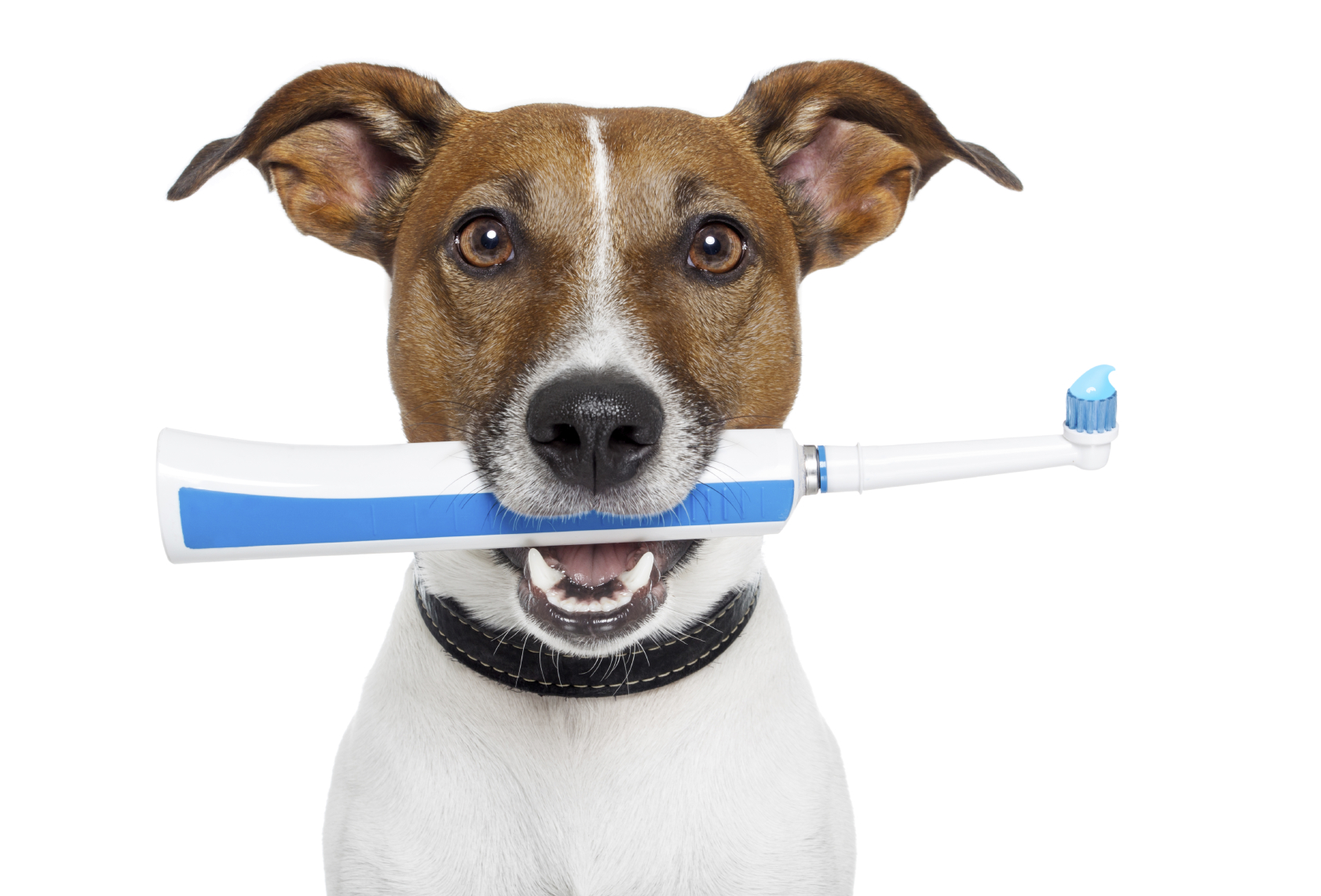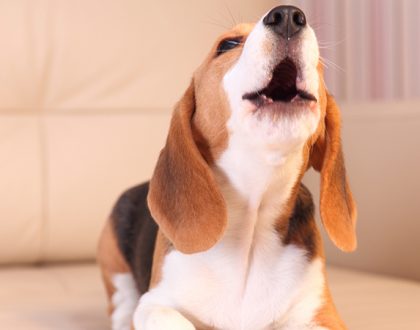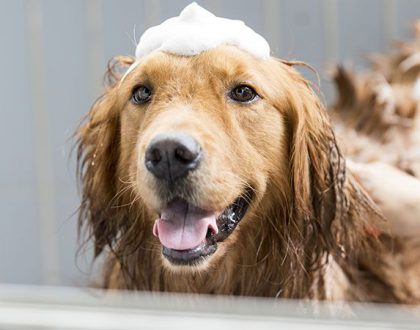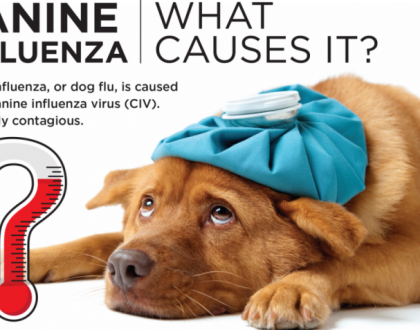How to Brush your Pet’s Teeth

Brushing your pet’s teeth is the key to maintaining good oral hygiene. As a result, dental cleaning procedures at your veterinarian are less likely to be needed, and bad breath (halitosis) is reduced. Brushing the teeth also helps spare a dog or cat oral pain: periodontal disease, a painful condition that occurs when inflammation affects the gums and other tissues around the teeth, is reduced or eliminated with good oral hygiene.
Brushing the teeth is easy to do, because only the upper teeth (not the lower teeth), and only the outside surfaces of the teeth (not the inside surfaces) need to be brushed.
In dogs and cats, like in people, what the dentist and hygienist do is only a small, though essential, part of the oral hygiene program. The responsibility for health and general well – being of your dog or cat is yours, and this should include basic dental care. Brushing your pet’s teeth is the main component of home dental care. The purpose is to remove plaque before it becomes tartar. Plaque is a slime composed of bacteria, saliva, and food particles that adheres to the teeth and fills the pocket between the tooth and gum. Left undisturbed, plaque rapidly collects minerals from t he saliva to form the rock – like brown deposits known as dental tartar . Dental tartar cannot be removed by any amount of brushing. By brushing your pet’s teeth daily, you remove plaque, preventing or slowing tartar buildup. As with all things, results depen d on the effort you give and on a pet’s predisposition (some develop plaque and tartar easily and require brushing more urgently than others).
Getting Started
Equipment/materials needed:
- Pet toothbrush or child’s/pediatric toothbrush
- Pet toothpaste
It is i mportant to use toothpaste formulated specifically for pets. Human toothpaste is to be avoided, as it will often cause stomach upset if swallowed. Baking soda, with its very high sodium content, can be dangerous to older patients. Hydrogen peroxide can be too harsh for the gums and can cause nausea if swallowed.
Perhaps the most important point to consider is that this simple preventive can become part of a daily routine and, when followed by a treat, becomes something a dog or cat enjoys.
Troubleshooting
I t is easy to train pets when they are young to enjoy having their teeth brushed. Older pets, on the other hand, tend to develop more periodontal disease, and their mouths and/or gums may be tender to the touch. A complete dental cleaning by your veterinari an may be required prior to initiating tooth brushing. Once all of the plaque, tartar and, if necessary, diseased teeth have been removed, you will have greater success.
Procedure
- The first step is to work with your pet’s mouth. With a little patience, you r pet will soon accept your attention. Make it fun for both of you. Use a lot of love and praise to gain their confidence. Try to brush the teeth at the same time each day so your pet gets into a routine. Late in the evening can work well if everyone invol ved is in a quieter mood. If your pet is highly motivated by food, try just before dinner, with the meal acting as a reward for cooperating.
- Start by handling the muzzle and lips. Soon you should be able to rub the teeth and gums with your finger. Place a little bit of soft cheese (for dogs) or tuna juice (for cats) on your finger when doing this. Many pets will then look forward to this treat.
- Next, use a soft toothbrush to brush the teeth.
- Several veterinary brushes are available, and many human (childre n’s) soft – bristle brushes are well suited to animal use.
- Place a small (pea – sized) amount of toothpaste on the bristles of the brush, lift the upper lip, place the brush on the outer surface of the teeth, and brush gently in small circles.
- You need only brush the upper teeth, and only the outside surfaces (the side of the teeth facing out, not the side of the teeth facing the tongue). Making it a game that ends in a reward is the key to enjoying this and making it easy on you and your pet.
- Brushing at least three times weekly is recommended, and once a day is ideal.
Afterwards
- By following a consistent program of home care, you will greatly improve your pet’s dental health. This will mean fewer professional cleanings, less tooth loss, and a happier, healthier pet. However, there is no substitute for professional veterinary care. You must work as a team with your veterinarian to ensure a long and happy life for your pet.
Frequently Asked Questions
What is a complete dental?
Your veterinarian i s the only professional allowed to perform a complete dental cleaning (“dental prophylaxis”) on your pet. Pets are placed under anesthesia and continuously monitored. The teeth are cleaned, and the gumline is scaled and probed. Dental radiographs (x – rays) may be recommended, as it is difficult to determine the extent of dental disease without them. Whether or not a complete dental cleaning is necessary can be determined during a routine checkup.
My local groomer performs dental work. Is this safe?
Your loca l groomer may brush your pet’s teeth, but groomers cannot legally or safely perform complete dental cleanings. Correct dental procedures require anesthesia, because much of the root of dental disease lies below the gumline; only veterinarians are allowed t o administer anesthesia.
How long will it take for my pet to become used to having his or her teeth brushed?
It depends on the pet; however, it is advised to start with one or two teeth per day, slowly working your way around the mouth. Each day you can ad d one more tooth. Within several days, it is usually possible to brush the entire mouth in one sitting.
Why do small – breed dogs have more dental disease than large – breed dogs?
Small – breed dogs are more likely to have dental disease than large – breed dogs be cause they generally do not chew on toys as much as large – breed dogs. Occasionally, small – breed dogs are fed a softer diet than that of large – breed dogs, which decreases the “scraping mechanism” that dry dog food plays on the teeth. Finally, there is likel y some genetic predisposition in certain breeds that makes them more susceptible to dental disease.
Should I wear gloves when brushing my pet’s teeth?
Ideally, yes; medical – grade exam gloves should be worn when working in any bacteria – prevalent area. Alway s wash your hands when you are finished.
Recommended Posts

How to Deal with Incessant Barking
December 05, 2017

How to Bathe a Dog or Cat Using Medicated Shampoo
December 05, 2017

